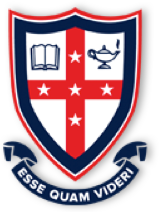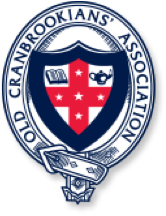Stories
"Six of the Best"
Today Australian school children are punished with litter duty or detention, but for much of the twentieth century corporal punishment was conceived as an integral part of educational discipline that “like war, is never good, but is sometimes necessary and inevitable”.1
This statement was made by Mr Rex Morgan, the headmaster of another popular New South Wales private school, Pittwater House, in 1986 against a campaign by parent groups and teacher unions that led to the abolition of the cane later that year. It was re-introduced in 1988, before finally being permanently outlawed in state schools in 1995, with private schools following suit two years later.2
If they were not traumatised by the experience, many old Cranbrookians at least have some entertaining stories to tell of the “sharp stings” that “everyone used to get” and the seemingly innocuous misdemeanours that warranted them.3 Most old boys agree that only the Headmaster or Masters were permitted to use the cane and generally gave “two, four, or six” strokes depending on the severity of the misdemeanour.4 Ian Platt Hepworth “received all of those different stages” during his schooling, at one time for quoting “at least half a page of the Bible verbatim” in an exam.5 His teacher thought that he was cheating.
According to Errol Bode, “the punishment was usually fairly minimal. Well, the requirement for punishment was minimal” with one unlucky boy receiving “six across the bottom” for smiling in early morning prayers.6 Colin Douglas also recalled “getting the cane quite a number of times”, once for drawing attention to a cufflink that was missing in a portrait of his teacher Polly Perkins.7 This missing cufflink quickly became known as the “missing link”, which Colin reflected was understood at the time as “the evolution of mankind, and wasn’t very complimentary”.8
Nonetheless, some clever boys managed to mitigate the effects of caning. According to Colin, “if you knew you were going to get caned you put an exercise book down your pants at the back”, but risked receiving twice as many stokes if caught.9
A few Masters have gone down in student memory for their fearsome “caning technique” (Headmaster Hone was known as “Blitz” and another teacher was nicknamed “Flogger Martin”), but the two Masters who most readily embraced the cane have been largely warmly remembered as good disciplinarians who enlisted an effective form of punishment.10 Alan Sharp reflected that Polly Perkins was a “firm”, “intelligent” and “remarkable little man” and, according to Barry Chard, Algie Child “was universally liked”.11
Marc Podosky believed that the cane “didn’t do me any harm. As a matter of fact it helped me … pulled me into gear”.12 He was not alone. Several past students viewed this divisive form of punishment as “very just and satisfactory”, because “that was it – it was all over”.13 Today at Cranbrook we still make a concentrated effort not to patronise our boys, or offer them an easy way out. However, rather than instilling them with a fear of punishment, we encourage all our students to form high expectations of themselves in their own pursuit of excellence, whatever that may be.
- 1. Luis Garcia, "Second State Abolishes Use of the Cane: New South Wales Bans Corporal Punishment", Times Educational Supplement, 10 January 1986.
- 2. Ibid. See also Shane Green, "How the Cane Was Canned", The Age, 16 March 2005; Brenda Cunningham-Lewis, "Spare the Rod: Reward and Motivation Can Be Just as Effective as Punishment", The Sydney Morning Herald, 27 August 2005; Helen Pitt, "Christians Call for Parents to Do the Caning", ibid., 4 February 1997. Schools kept punishment books; see for example Vaucluse Boys High School, "Punishment Book", (1960); Eurunderee Public School, "Punishment Book", in School Records, ed. Department of Education and Communities (Sydney, NSW: Western Sydney Records Centre, 1980).
- 3. Barry Chard, interview by Vicki Mesley, 31 August, 1994, interview S244/25.
- 4. Ian Platt-Platt-Hepworth, interview by Graham Cole, 17 September, 1993, interview 243/04
- 5. Ibid.
- 6. Errol Bode, interview by Vicki Mesley, 5 November, 1993, interview S244/8.
- 7. Colin Douglas, interview by Vicki Mesley, 10 March, 1994, interview S244/26.
- 8. Ibid.
- 9. Ibid.
- 10. Sir Charles David Griffin, interview by Vicki Mesley, 12 September, 1993; Eric “John” Lawson, interview by Graham Cole, 20 September, 1993, interview S244/3; Robert S. Penzer, interview by Graham Cole, 25 February, 1994, interview S244/15.
- 11. Alan Sharp, interview by Vicki Mesley, 23 June, 1994, interview S244/23; Chard.
- 12. Horace Marcus Podosky, interview by Graham Cole, 19 July, 1995.
- 13. Douglas, op. cit.; Martin Pitt, interview by Vicki Mesley, 24 December, 1993, interview S244 10.

